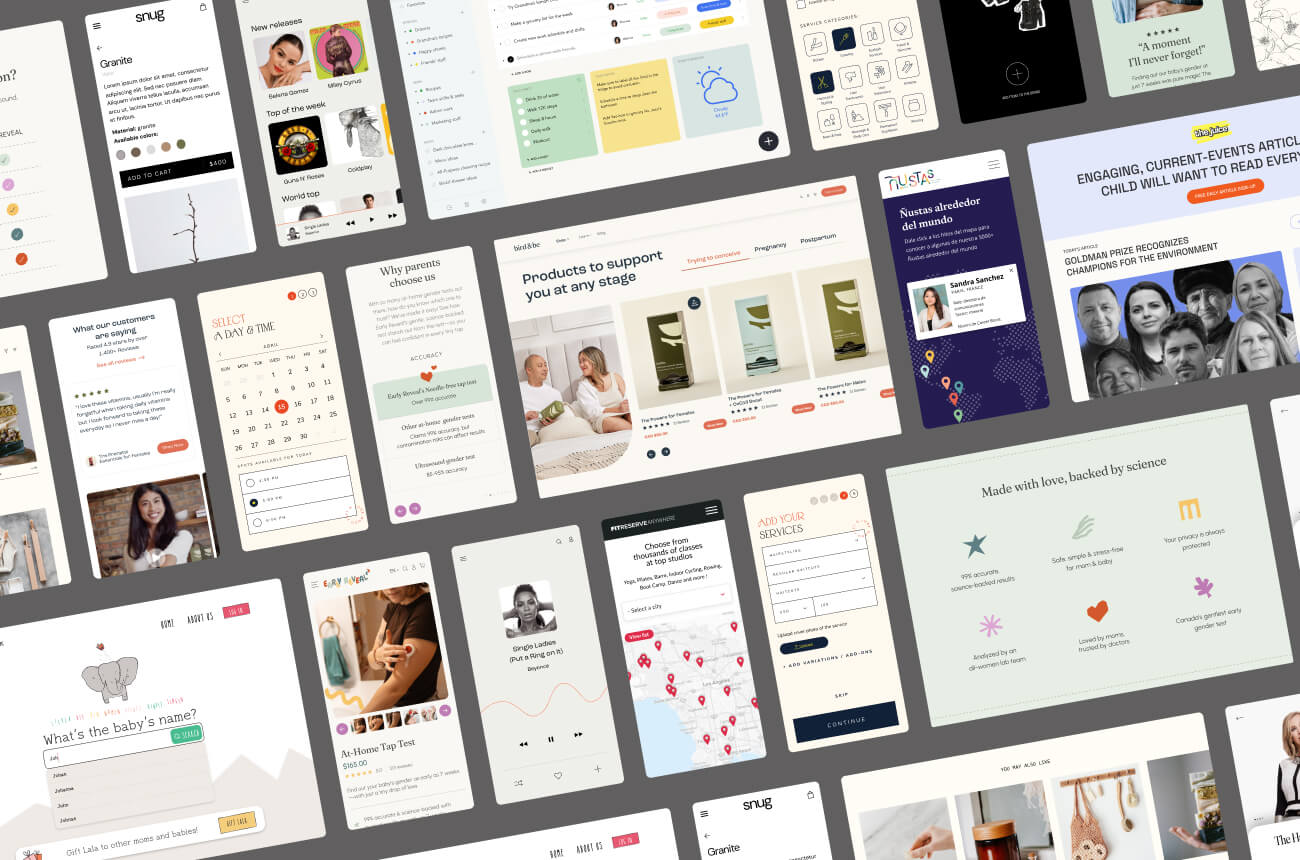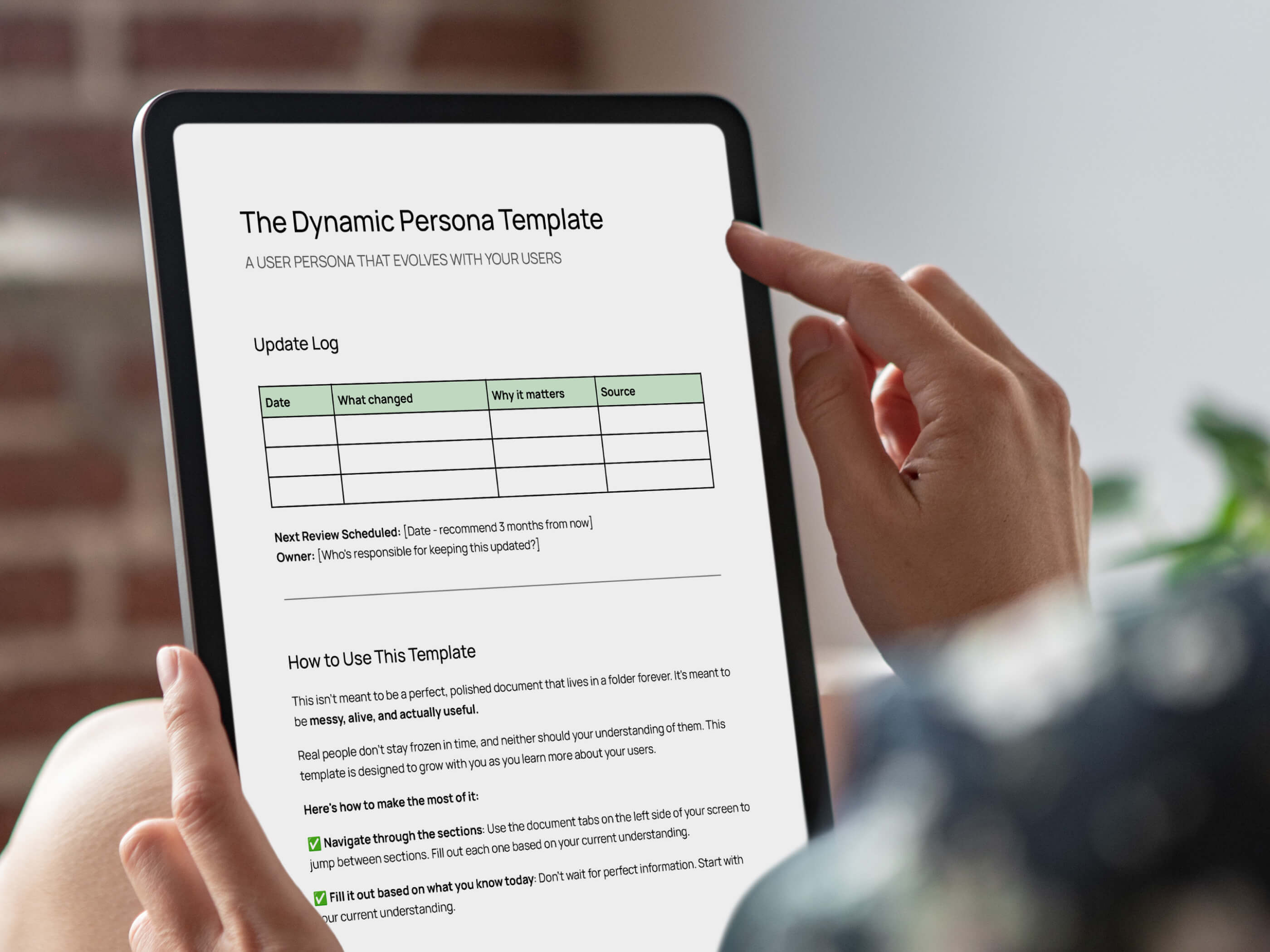Link copied to clipboard

You’re building something that matters. Maybe it’s an app that helps women track their fertility journey, a platform for new parents to find trusted support, or a tool that makes family care a little less chaotic.
You know design will play a huge role in how people experience your product, how much they trust it, how easily they understand it, and whether they’ll come back.
But here’s the question every founder faces sooner or later:Who should design it?
A freelance designer seems flexible.An agency sounds professional.An in-house designer feels ideal.
And yet, none of them quite fit where your startup is right now.
You’re past the “quick logo and a landing page” stage, but you’re not ready to commit to a full creative team. You need strategy, consistency, and someone who truly understands your users, not just a deliverables factory.
You’re not alone in that. Every founder eventually has to choose between three common paths: hiring a freelance designer, working with an agency, or building an in-house team.
And maybe there’s a fourth path (more on this later).
Each one can work, depending on where your startup is and what kind of support you need.
Let’s look at how they differ.
Freelancers are often the first stop for early-stage founders. They’re flexible, fast, and usually the most affordable option when you’re just getting your idea off the ground.
They’re great for designing your first landing page, creating your pitch deck, or turning your concept into a clickable prototype. You get things done quickly and without much red tape.
But as your product grows, so do your design needs. Maybe now you need help refining your UX flow, redesigning your brand, and creating new marketing assets, and suddenly one designer can’t cover it all. Most freelancers specialize in one area, and asking them to stretch outside their lane doesn’t always work.
Then there’s the rhythm of working with freelancers. Every new task usually means a new proposal, a new timeline, a new round of admin. It rarely feels like a continuous partnership. Instead, every time you reconnect, it’s like starting from scratch.
Freelancers are perfect for specific projects with clear boundaries and timelines. But when it comes to building a cohesive, evolving product experience, consistency and long-term collaboration become the challenge.
When founders outgrow the one-designer setup, agencies often become the next step. They come with structure, a full range of skills, and the promise of speed and polish. You’ll usually get access to specialists across UX, UI, branding, strategy, and even development, all under one roof.
For startups that have secured funding or are preparing for a major launch, this can sound like a dream. Agencies can move fast, produce beautiful deliverables, and help you make a strong impression with investors or early adopters.
But here’s the catch: the more people involved, the more layers there are between you and the person actually designing your product. You’ll likely work through a project manager or account lead, and while they’ll keep things organized, you may lose that close connection with the design team itself. It can also mean less day-to-day involvement on your end as a founder, which sounds nice in theory but can make collaboration harder when your product is still evolving.
And then there’s the cost. Agency retainers and hourly rates can add up quickly, making it hard for early-stage startups to maintain that kind of partnership long-term.
Agencies are great when you’re ready for scale and need a high level of execution. But if you’re still in the messy middle, testing, iterating, and redefining your vision, the distance and cost of an agency relationship can feel like too much too soon.
Hiring an in-house designer is often seen as the ideal setup. You get someone who lives and breathes your product, sits in your Slack channels, and understands every part of your user journey. They’re close to the mission and can make design decisions that feel truly aligned with your goals.
If you have the budget to bring in a senior designer who’s experienced, strategic, and able to work independently, it can be an incredible investment. But more often than not, startups hire someone junior and expect senior-level thinking. That’s when things get tricky.
Junior designers are talented and eager, but they still need direction, feedback, and mentorship. Without that support, the founder often becomes the default creative director, spending time reviewing designs, giving feedback, and managing the process on top of everything else.
Then there’s the commitment. Hiring in-house isn’t just about salary; it includes benefits, onboarding, and long-term planning. You’re not bringing someone on for one project, you’re committing to them as part of your team.
An in-house designer is the right move when you have steady design needs, clear systems, or the budget for senior talent to build those systems and workflows for you. But for early-stage startups still finding their rhythm, it can feel like a big commitment too soon.
Somewhere between the flexibility of a freelancer, the structure of an agency, and the consistency of an in-house team, there’s a fourth option that more founders are starting to embrace: the boutique design studio.
A boutique studio combines the personal involvement of a freelance designer with the strategic support of a small, specialized team. You’re not working with a giant agency, but you’re also not relying on one person to do it all. It’s a partnership that grows with you, adapting as your startup evolves from MVP to product-market fit and beyond.
You’ll often work directly with a lead designer who becomes deeply familiar with your product, your users, and your goals. They stay involved throughout your journey, bringing in collaborators when needed but keeping the process tight, intentional, and human.
It’s the sweet spot for startups that need more than one set of hands but aren’t ready for a full creative department. You get strategy, execution, and continuity without the layers or overhead.
For family and femtech startups, this model often makes the most sense. These products demand empathy, consistency, and long-term thinking, and that kind of relationship is easier to build when your design partner feels like part of your team, not just a vendor.
A boutique design studio gives you the reliability of an in-house designer, the range of an agency, and the care of a freelancer, all in one intentionally small package.
The boutique studio model isn’t something we stumbled into by accident. It’s a path we chose intentionally after seeing the gap between freelancers, agencies, and in-house teams.
At Random Pattern Studio, we’ve built a model that gives founders the quality and strategy of an agency, the closeness of an in-house designer, and the seniority of a seasoned freelancer. As the founder and creative director, I stay personally involved in every project because I believe thoughtful design comes from genuine collaboration.
Our clients get a partner who’s invested in their vision, not just their deliverables. We work in focused weekly sprints, and for many founders, that collaboration naturally evolves into a long-term retainer once we find our rhythm together.
If you’re building a family or femtech product and want a design partner who’ll grow with you, chat with us to explore how we can work together.


.jpg)